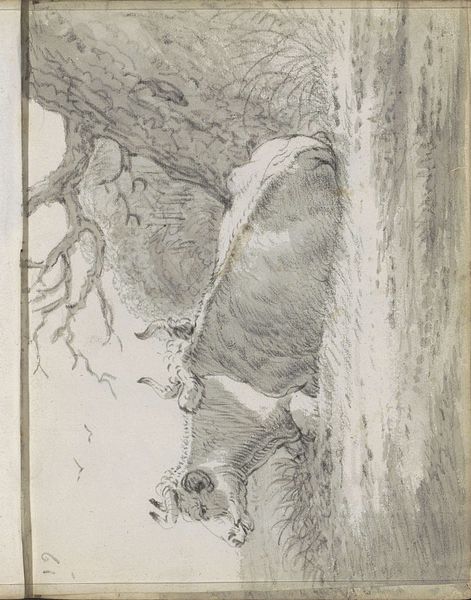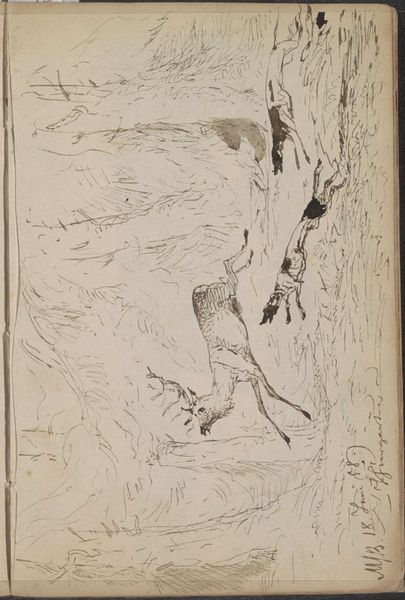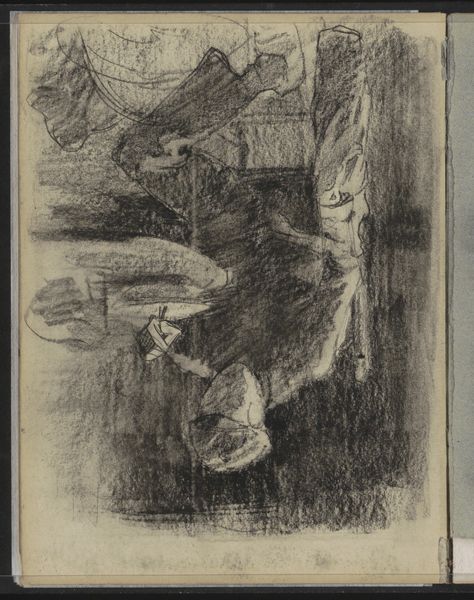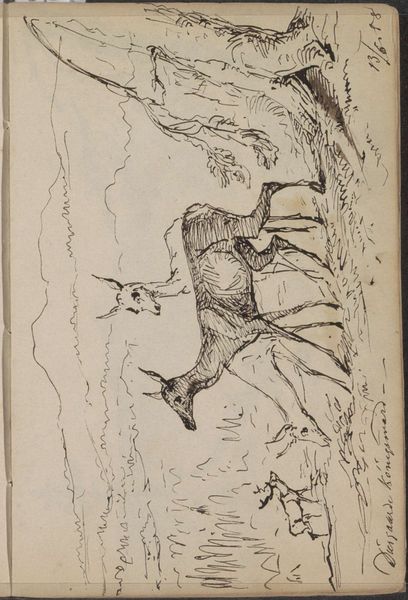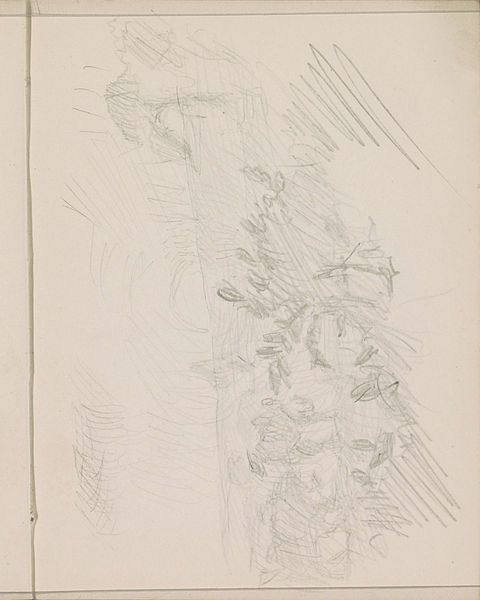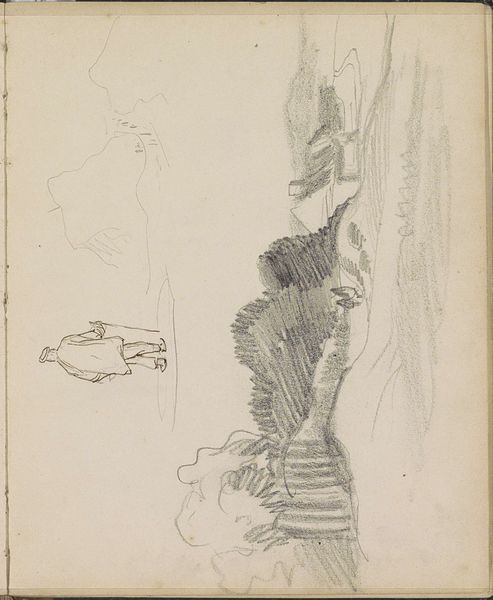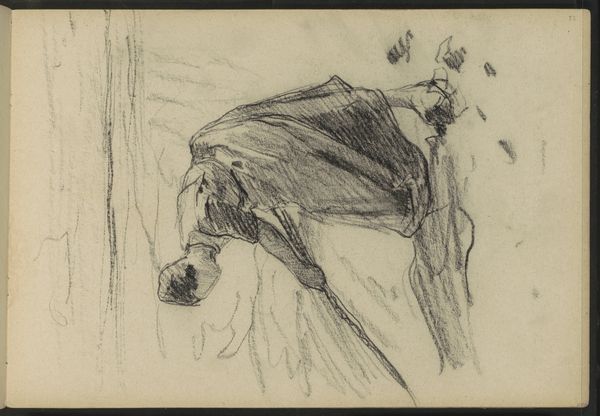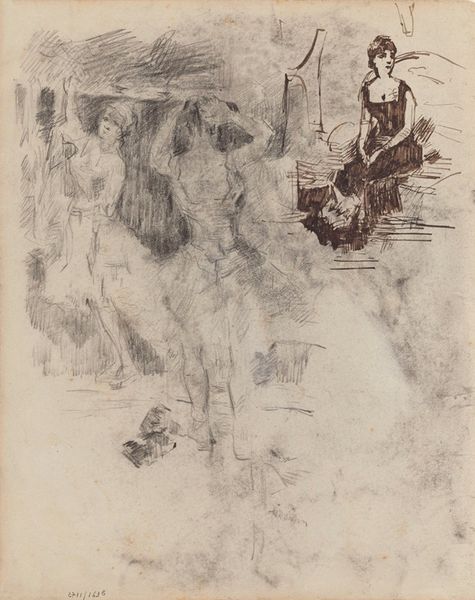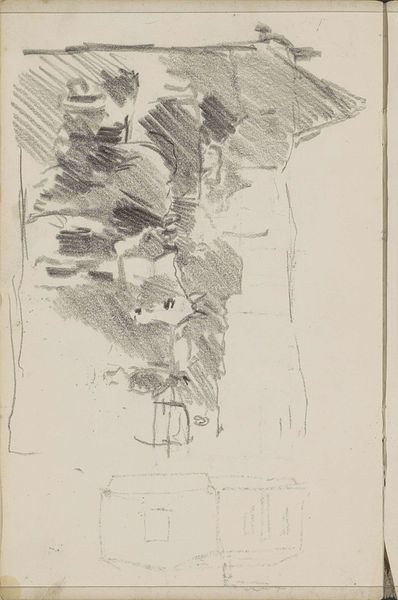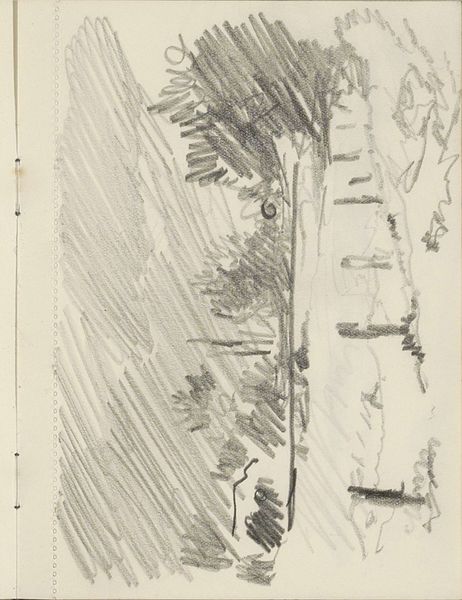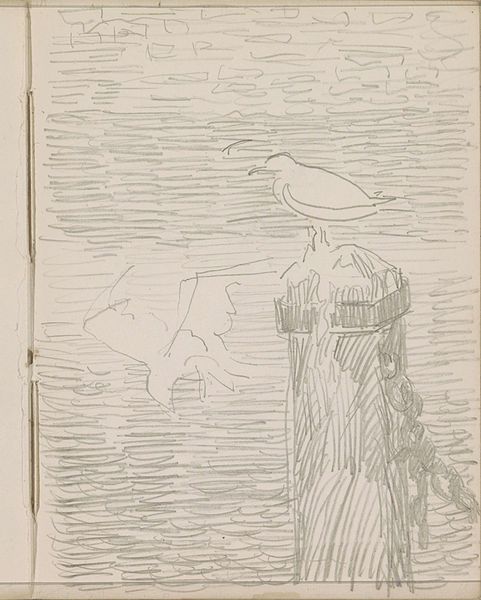
drawing, ink, charcoal
#
drawing
#
ink painting
#
landscape
#
charcoal drawing
#
oil painting
#
ink
#
charcoal
#
naturalism
#
watercolor
#
realism
Copyright: Rijks Museum: Open Domain
Editor: This is "Landscape with a Deer by the Edge of a Brook" by Johannes Tavenraat, made in 1858, using ink and charcoal. It feels quite raw, like a study. What do you see in this piece beyond just a depiction of nature? Curator: I see a negotiation of power. Landscape art wasn't just about pretty scenery. Think about land ownership in the 19th century. Who had access to these idyllic locations? Was it accessible to everyone? Who benefits from the deer as a resource? This artwork isn't detached from social and economic realities. Editor: So you're suggesting it's not just a peaceful scene, but possibly a statement about access and privilege? How does the style connect with these themes? Curator: Absolutely. And the very *act* of representing the landscape ties into colonialism and environmental exploitation. How does the deer fit into it? Does it belong here? Or does it too become part of the act of dispossession of Indigenous life by the "civilized"? Notice Tavenraat's style, leaning towards realism, which carries its own loaded history related to race science and measuring skull size. I wonder whether art is actually ever ‘objective’, in the traditional art historical understanding of such. Editor: I never considered it in that light. I focused on the nature and ignored other layers within this landscape. Now I am rethinking everything. Curator: Precisely! We must not forget that art can become entangled in identity, politics and societal critique. This small artwork shows it can question our established ways of seeing, feeling, and thinking. Editor: This has really opened my eyes, and given me a much richer appreciation for Tavenraat's work!
Comments
No comments
Be the first to comment and join the conversation on the ultimate creative platform.
